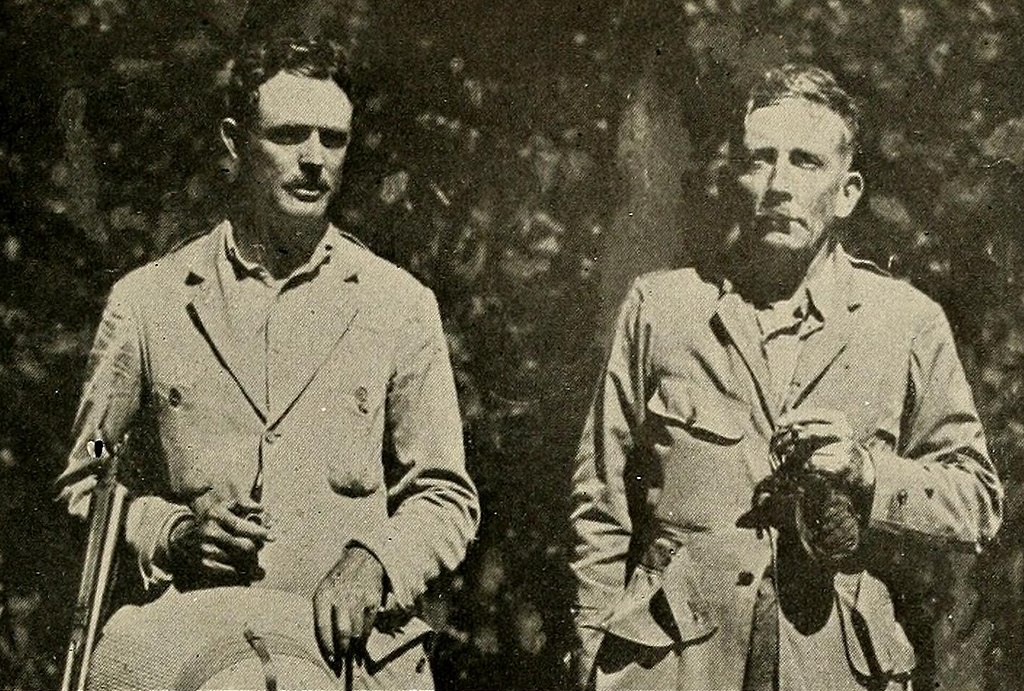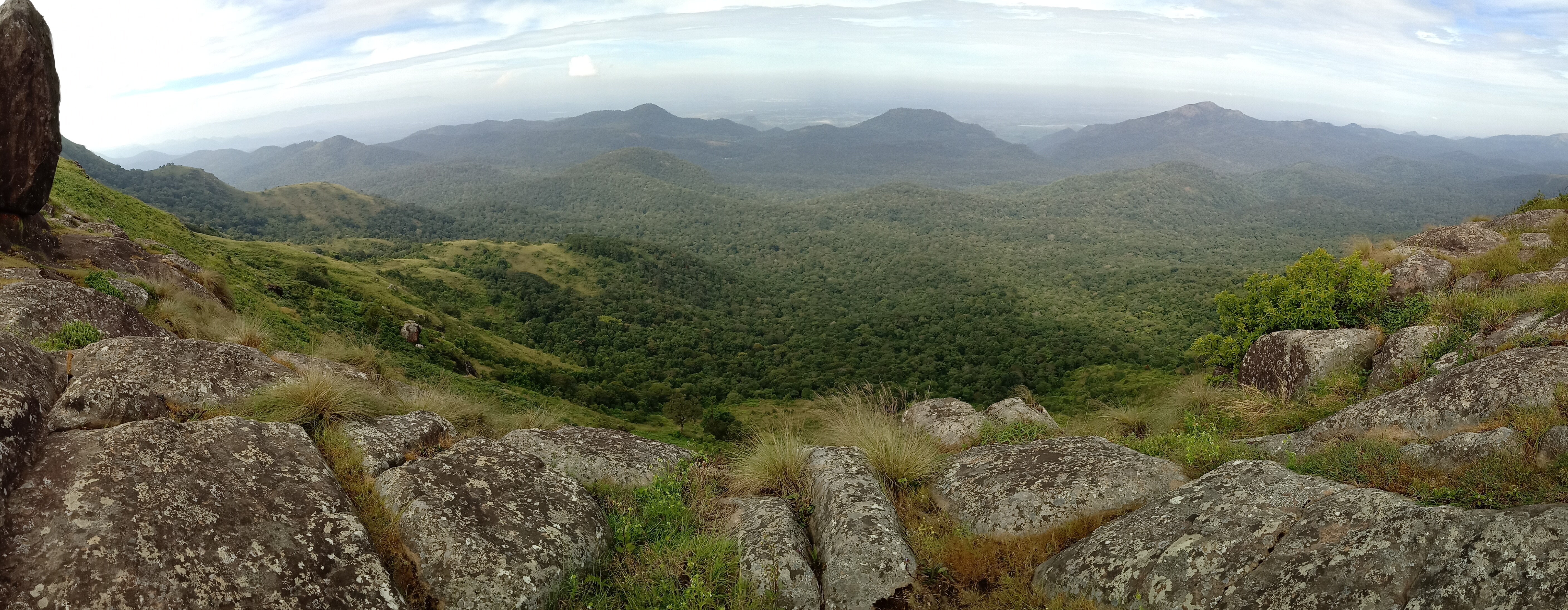ESSENTIAL YOU ACCOMPANY FIRST SCIENTIFIC VISIT SINCE 1916 TO FLAMINGO COLONY MARCH FIFTEEN STOP PARTY CONSISTS ARTHUR VERNAY PRESIDENT BAHAMAS FLAMINGO PROTECTION SOCIETY COMMA ROBERT MURPHY OF AMERICAN NATURAL HISTORY MUSEUM AND SELF STOP FAIL NOT BRYCE
The text of a telegram in 1956 sent by OSS operative Ivar Felix Bryce to his friend Ian Fleming. Fleming joined Arthur Vernay to the remote island of Inagua where the silence of the vast sea would inspire Crab Key, the base of his villain Dr No and Fleming used Bryce's middle-name Felix for his CIA operative. Photographs of the group by the ornithologist Robert Cushman Murphy survive in archives. James Bond, of course, was named after the ornithologist who wrote the Birds of the West Indies.
 |
| From Raymond Benson (2012). The James Bond Bedside Companion. Crossroad Press. [ Fair Use ] |
Arthur Vernay had then retired to Nassau and was involved in flamingo conservation in the Bahamas in 1956. Surprisingly, he had never been interested in birds or wildlife until 1921. He had moved from England to New York, and starting as an elevator operator, began an antique store and rose to wealth and power - an unbelievable rags to riches story. His interest in the wild was, rather surprisingly, sparked off by a visit to the Biligirirangan Hills, to the estate of R.C. Morris in 1921.
 |
| Vernay with J.C. Faunthorpe of UP (the United Provinces) in 1923 |
 |
| Taxidermic mount in the Vernay-Faunthorpe Hall at the AMNH Jonas, Louis. 1930. The mounting of an elephant group. Proceedings of the American Association of Museums, New Series, no. 11, Washington, DC. A (not recommended for the sensitive) video showing the preparation of it can be found here |
 |
| The Goan skinner in this is not N.A. Baptista but a certain Fernandez (right) with Charles McCann during the Vernay Hopwood Expedition R.C. Morris also accompanied the group - see BNHS note |
 |
| Panchan, Vernay's skinner, had come from the Terai, and is described as a Tharu in the employ of J.C. Faunthorpe |
Vernay became a trustee at the American Museum of Natural History in 1935 and a Vice Patron of the Bombay Natural History Society in 1928. Through his travels, he sent specimens, mostly to the former but some to the latter too. Morris joined the Vernay-Hopwood Upper Chindwin Expedition of 1935. There are pictures of him in the archives of H.C. Raven.
 |
| Major Guy Rowley, Arthur S. Vernay, and Colonel Randolph C. Morris. “Singkaling Hkamti to Hahti, Mar. 1935.” Photograph by H. C. Raven. Image VHC-M16, American Museum of Natural History Library |
Here is a view of Morris' home in the Biligiris, Attikan from 2019.
 |
| Attikan, the lawn was being worked. The vast front yard was once used by the Maharaja of Mysore on a hunting visit. |
And a view from Honnematti rock beside the hill on which their estate stands.
Vernay went on several other expeditions, one with another wealthy explorer Charles Suydam Cutting. The Vernay-Cutting expedition was aided by British intelligence officer and amateur botanist F.M. Bailey. In Africa, he was joined by another ornithologist who also worked as an OSS operative - Rudyerd Boulton. Cutting was apparently part of what was called "The Room" an espionage ring organized by wealthy Americans including Roosevelt and Vincent Astor.
While all these images capture the age of expeditions and unknown frontiers, one wonders if modern field biologists sometimes, and in vain, try and relive the same. Worse still, are conservation projects, funded by wealthy corporates, utilized to post so-called experts into wilderness areas where the local people themselves are treated the way the so-called "natives" were treated in colonial times. Wildlife movies often dwell on the romance of travel - showing how the wildernesses were reached by helicopters, 4-wheel drives or by hacking their way through jungle while glossing over the fact that local people live right near those locations without much ado.
With government funding drying up in many science fields, will biologists go to the billionaires again?
Notes
As usual the writing of this note is a byproduct of improving Wikipedia entries - in this case - for references and more details do look up
 |
| View from Honnametti, the Honnametti kallu (rock) is at the left edge |
 |
| A diorama in the Vernay-Faunthorpe Hall of the American Museum of Natural History probably inspired by a scene from the Biligirirangans. |
Vernay went on several other expeditions, one with another wealthy explorer Charles Suydam Cutting. The Vernay-Cutting expedition was aided by British intelligence officer and amateur botanist F.M. Bailey. In Africa, he was joined by another ornithologist who also worked as an OSS operative - Rudyerd Boulton. Cutting was apparently part of what was called "The Room" an espionage ring organized by wealthy Americans including Roosevelt and Vincent Astor.
 | |
| Vernay, unknown Tibetan and Suydam Cutting in Tibet from Cutting's The Fire Ox and Other Years (1940) Another photo in the Smithsonian Archives shows them in Lhasa with a Lhasa Apso at their feet. Cutting would introduce Lhasa Apsos into the United States. He gifted dachshunds to the Dalai Lama in return. |
While all these images capture the age of expeditions and unknown frontiers, one wonders if modern field biologists sometimes, and in vain, try and relive the same. Worse still, are conservation projects, funded by wealthy corporates, utilized to post so-called experts into wilderness areas where the local people themselves are treated the way the so-called "natives" were treated in colonial times. Wildlife movies often dwell on the romance of travel - showing how the wildernesses were reached by helicopters, 4-wheel drives or by hacking their way through jungle while glossing over the fact that local people live right near those locations without much ado.
With government funding drying up in many science fields, will biologists go to the billionaires again?
Notes
As usual the writing of this note is a byproduct of improving Wikipedia entries - in this case - for references and more details do look up
PS Sept-2021: The new biography - The Real James Bond by Jim Wright is a great read.


Amazing and incredible work on natural history Shyamal. Looking forward to more. Thanks
ReplyDeleteWonderful Shyamal. In one of the dioramas at AMNH, the hills of BR hills, the Namagundikan, has been used as a background. The telescope tha Ralph Morris had was gifted by Vernay, if I am right.
ReplyDeleteIs the bungalow Honnametti? Looks like Attikan?
ReplyDeleteYes, that is Attikan Bungalow.
Delete